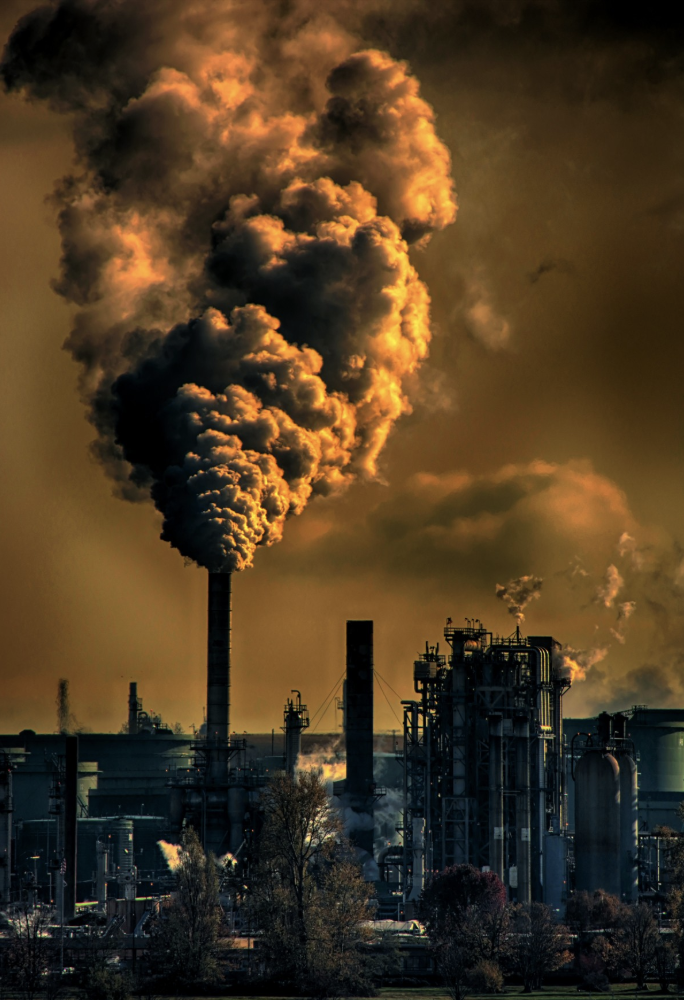 NETs are a broad range of strategies, from ocean fertilization to soil carbon sequestration, designed to remove carbon dioxide from the atmosphere once it has already been released. Some NETs such as afforestation, which involves planting trees over large swaths of land to naturally absorb carbon dioxide from the air are fairly low-tech. Yet others like carbon capture and storage, whereby machines remove carbon right out of the air, require complicated devices and are not yet deployable at scale. While there are a variety of technologies being studied and in development, the NETs that receive the most public attention usually involve some type of carbon capture and storage.
NETs are a broad range of strategies, from ocean fertilization to soil carbon sequestration, designed to remove carbon dioxide from the atmosphere once it has already been released. Some NETs such as afforestation, which involves planting trees over large swaths of land to naturally absorb carbon dioxide from the air are fairly low-tech. Yet others like carbon capture and storage, whereby machines remove carbon right out of the air, require complicated devices and are not yet deployable at scale. While there are a variety of technologies being studied and in development, the NETs that receive the most public attention usually involve some type of carbon capture and storage.
NETs have been touted as an effective means of avoiding the worst consequences of climate change, especially by fossil fuel companies, but they have a number of downsides:
1) NETs are not yet feasible at scale.
Many of these technologies haven’t ever been deployed or are only theoretical, while others have only seen limited use. Aside from afforestation, most NETs are also extremely expensive, costing hundreds of dollars to remove just one ton of carbon dioxide. For perspective, we released 37 billion tons of carbon dioxide in 2018. Removing a year’s worth of carbon, using direct air carbon capture and storage at an average price of $200 per ton, would thus cost around $7.4 trillion.
 2) NETs don’t address all the harms of fossil fuel pollution.
2) NETs don’t address all the harms of fossil fuel pollution.
Burning coal, gas, and oil release more than just carbon dioxide into the atmosphere, including particulates, carcinogens, and heavy metals — which all exact a devastating toll on public health. Air pollution alone costs the world economy trillions of dollars a year, not even accounting for climate change. Fossil fuel extraction also involves widespread environmental degradation, from deforestation associated with open-pit mines to fish kills resulting from oil spills. Even if climate change wasn’t occurring, we would still need to eliminate fossil fuel use as soon as possible.
3) They don’t address environmental injustices.
Often low-income communities and communities of color suffer the brunt of the harms of local air pollution, which NETs don’t mitigate. Whether from coal plants located in their neighborhoods or highways bisecting communities, these groups are exposed to a disproportionately greater amount of air pollution. As a result, they may suffer from higher levels of pollution-associated illnesses; for example, Black Americans are 3 times more likely to die from asthma compared to white Americans. NETs, because they emphasize removing carbon from the atmosphere as opposed to preventing the emission of pollution in the first place, fail to address this issue.
4) They might lead to greater fossil fuel use and prevent the deployment of renewable energy.
Relying on NETs might lead to a “moral hazard” scenario, where we don’t take the necessary actions to reduce our emissions now because we are depending on NETs to save us in the future. According to this theory, NETs could actually perpetuate the harmful status quo; we’ll continue to spew pollution, perhaps even at higher rates, as long as NETs can suck the carbon back up. We’re already seeing this logic play out with oil companies that are investing in NETs because it would allow them to continue to profit off the extraction and burning of fossil fuels.
5) NETs are not effective enough to curb climate change.
For example, reforestation is the most common form of a NET, but planting trees can only do so much in regards to carbon sequestration. Unfortunately, reforestation is simply not enough, as the annual capture potential is lower than what’s needed to fight climate change. In order to truly see successful results from NETs, we first need to decrease our overall carbon emissions by ending our use of fossil fuels.
6) NETs will likely have side effects.
Many NETs require massive land-use changes, which could negatively affect food security and biodiversity. They can also reduce the land’s albedo, meaning more sunlight would be absorbed (thereby increasing temperatures) instead of reflected back to space. Other NETs may lead to increased air and water pollution. Most importantly, we just don’t know the wide-ranging effects these technologies may have. As we’ve seen with climate change, when humans alter the atmosphere on a global scale, lots of unexpected consequences occur.
It’s essential to prioritize climate change mitigation (reducing and decreasing carbon emissions at their source) over NETs. While certain NETs, especially reforestation, could foreseeably help us reduce atmospheric carbon, but counting on them to get us out of our fossil fuel mess is both foolish and a recipe for disaster and the epitome of our hubris and techno-utopian thinking. We need to transition to clean, renewable energy and improve energy efficiency as soon as possible, assuming NETs won’t be deployed — they should not factor into our carbon budget calculations. Practices like reforestation should be considered an additional step, in that they should be implemented in addition to, rather than instead of, carbon emissions reductions.
It’s healthier, cheaper, safer, and more environmentally friendly to limit pollution at the source instead of after it’s been expelled into our air. In the end, we cannot allow the prospect of NETs to delay fossil fuel elimination.